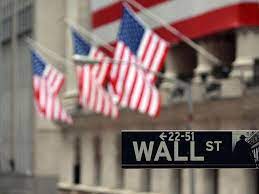NEW YORK (Reuters): BofA Global Research said on Wednesday it expects the S&P 500 to end 2023 nearly 7 per cent higher than it previously forecast, and that “old economy” stocks on the blue-chip index could benefit as much, if not more, over their new-age tech peers.
The Wall Street brokerage now expects the index to end the year at 4,600 points, higher than its previous estimate of 4,300 and 3.5pc higher than its close of 4,443.95 on Tuesday.
The S&P 500 is up 15.7pc so far this year, largely driven by a rally in a handful of mega-cap growth stocks such as Nvidia and Meta that have ridden the artificial intelligence (AI) boom.
While the rally has been moderating, BofA remains in “neutral” to “positive” territory on US stocks, with a bias towards equal-weighted stocks, strategists led by Savita Subramanian said.
An equal-weight index assigns uniform weights to each constituent, unlike a market capitalization-based index, like the S&P 500, where bigger companies tend to have an outsized influence. Equal-weighted stocks have less volatile earnings, smaller differences in analysts’ estimates, and are cheaper and less crowded than growth stocks, Subramanian said.
While a “fresh wave of bear narratives around equities have emerged”, BofA says the “old economy”, which includes value stocks – more prevalent in the equal-weighted S&P 500 – could benefit as much as tech and growth.
This has not been priced “as richly,” Subramanian says.
Moreover, not only have equal-weighted stocks “almost always” beat mega-cap stocks in the past nine recovery cycles, but they could help mitigate duration risks when up against safer assets such as bonds, Subramanian noted.
While the S&P 500 is roughly in line with its historical average on an equal-weighted basis, the valuation gap between the top seven stocks and equal-weighted (SPW) stocks is the highest since the 2001 Tech bubble, Subramanian notes.
This suggests “more upside in SPW.”
However, even mega-caps have a chance if they keep valuations attractive, like Meta did when it cut costs and announced a buyback early this year, Subramanian said.
“Tech companies shifting focus to shareholder return, efficiency and right-sizing cost structure could be their path to outperformance from here.”
Several brokerages including Morgan Stanley have recently made the case for cyclical sectors, especially energy, as a good way to trade stocks through the year-end.
WHAT IS OLD ECONOMY?
This term is used to describe the blue-chip sector that enjoyed substantial growth as industrialization expanded around the world. These sectors do not rely heavily on technology or technological advancement, but use processes that have been around for hundreds of years.
Old economy differs from new economy in that it relies on traditional methods of doing business rather than leveraging new cutting-edge technology. This traditional economic system dates back to the Industrial Revolution and revolves around producing goods as opposed to the exchange of information. Common goods are valued by measurable factors such as operating expenses and scarcity of the product.
Members of the old economy operate in traditional sectors such as steel, manufacturing, and agriculture, many of which do not depend entirely on technology. Despite losing market share to new economy companies, they still employ a large swathe of the population and contribute a significant portion to gross domestic product (GDP).







